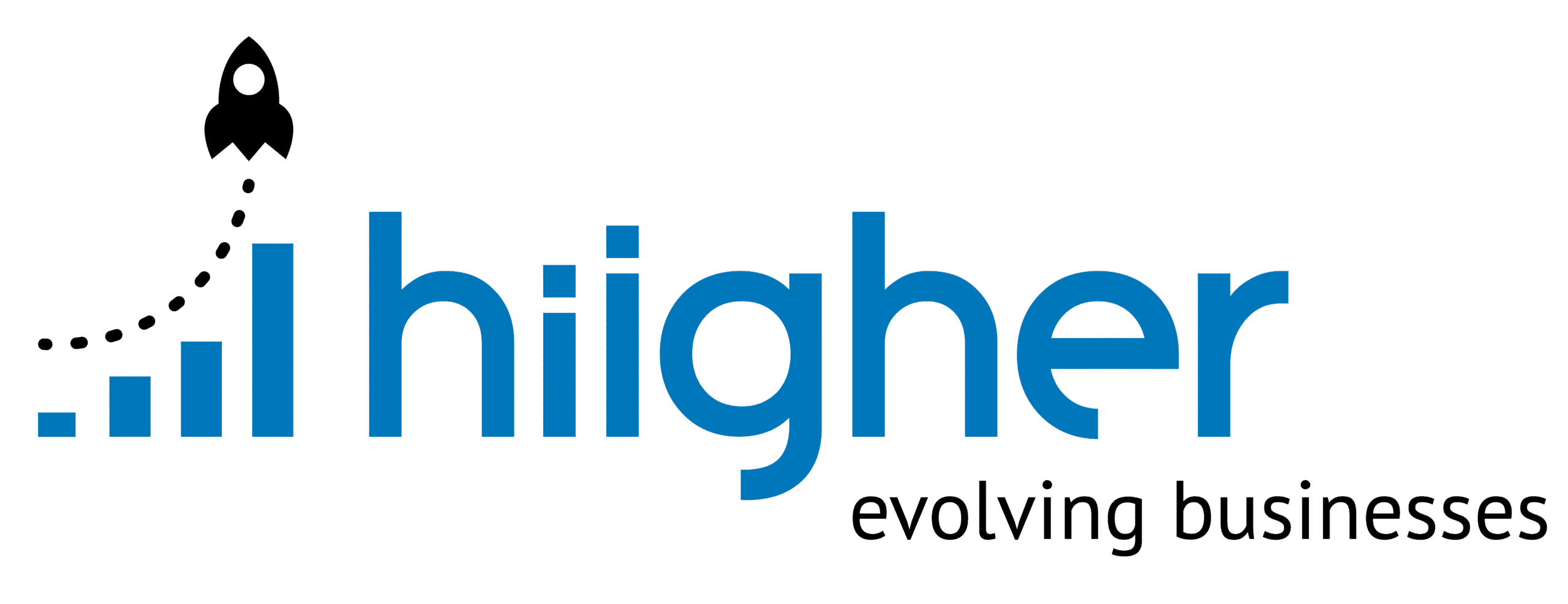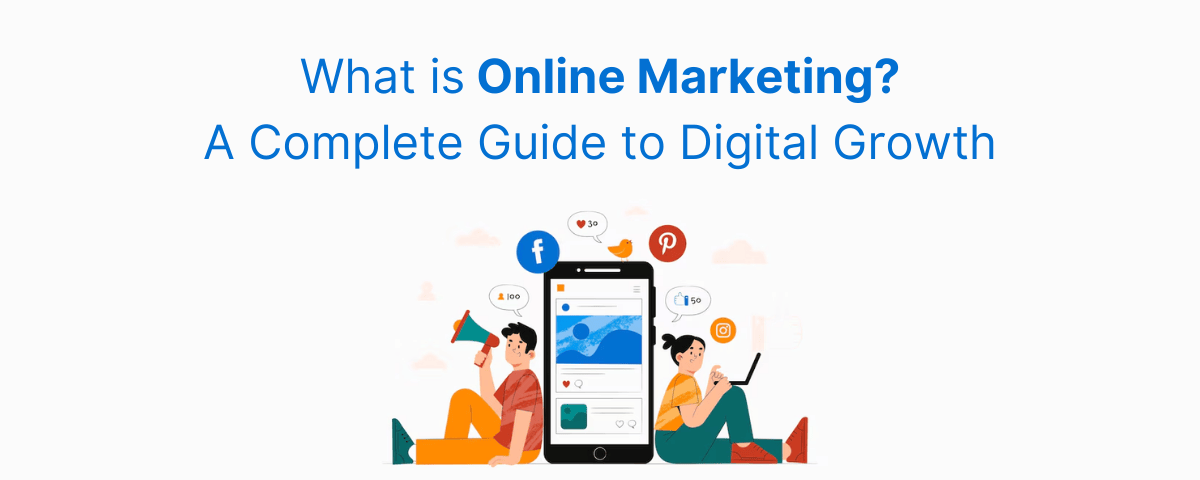- Instagram Marketing Strategy 2025: Tips, Tools & Growth - September 3, 2025
- Facebook Marketing Guide 2025: Strategies to Boost ROI - September 3, 2025
- How to Do an SEO Audit in 2025: Step-by-Step Guide - September 3, 2025
At its core, online marketing is about meeting your audience where they already spend their time: websites, social media, search engines, and email. Instead of relying on expensive billboards or TV ads that spray your message to the masses, digital marketing helps you pinpoint exactly who you want to reach, track what’s working, and adjust in real time.
Whether you’re a small business owner trying to get more leads or a startup looking to scale quickly, online marketing is the engine that can make growth both cost-efficient and measurable.
Contents
- Key Takeaways
- Defining Online Marketing
- Key Benefits of Online Marketing
- Core Components of a Digital Strategy
- How Online Marketing Works
- Leveraging Social Media Platforms
- Content Marketing Essentials
- Influencer Partnerships in Digital Campaigns
- Display and Video Advertising Explained
- Digital Public Relations Strategies
- Affiliate Marketing Opportunities
- Building a Strong Online Presence
- Personalization and Customer Segmentation
- Setting Measurable Goals and KPis
- Optimizing Your Website for Conversions
- Analyzing and Measuring Marketing Performance
- Integrating Online and Traditional Marketing
- Overcoming Common Digital Marketing Challenges
- Tools and Platforms for Marketing Automation
- Steps to Launching Your First Campaign
- Staying Ahead of Digital Marketing Trends
- Resources for Further Learning and Growth
- Frequently Asked Questions
- Conclusion
Key Takeaways
Here’s the quick version before we dig deeper:
- Online marketing uses internet channels like websites, social media, email, and search engines to reach and engage audiences.
- Strategies like SEO, PPC, and content marketing increase visibility and attract potential customers.
- Performance is tracked with analytics tools (like Google Analytics), letting you adjust campaigns in real time.
- Online marketing thrives on precise targeting and personalization, which means better engagement and higher conversion rates.
- Compared to traditional marketing, it’s far more cost-effective and delivers a stronger ROI.
Defining Online Marketing
If you strip away the buzzwords, online marketing is simply the practice of using the internet to get your product or service in front of the right people.
That can mean showing up in Google when someone types a phrase related to your business (thanks to SEO), running targeted Facebook ads that reach your ideal customer, or sending personalized emails that nurture leads until they’re ready to buy.
What makes digital marketing different from traditional methods is its trackability. Every click, every sign-up, every purchase can be measured. Tools like Google Analytics give you a real-time snapshot of how people interact with your website and campaigns. With that data, you can make smarter decisions instead of guessing.
In other words, online marketing isn’t just broadcasting your message, it’s a two-way conversation between your brand and your audience, backed by measurable results.
Key Benefits of Online Marketing
One of the biggest reasons businesses shift toward online marketing is cost savings. Studies show that digital campaigns can reduce advertising costs by up to 62% while generating three times more leads than traditional methods.
But it’s not just about saving money. The real magic happens in how flexible and scalable online marketing is. You can start small, maybe with a few ads or a single SEO campaign, and then expand as you see results, without taking on heavy upfront costs.
Let’s break down two of the most important advantages:
1. Cost Efficiency and Scalability
Traditional ads like TV or print often demand huge budgets and offer little flexibility. Online marketing flips that script. You can test campaigns with just a few dollars, see which ones work, and scale the winners.
Here’s a quick snapshot:
| Benefit | Online Marketing Advantage |
| Cost Efficiency | 62% lower expenses |
| Scalability | Can grow or shrink easily |
| ROI Measurement | Real-time analytics |
By tracking ROI in real time, you’ll know where your money is actually working. That means no more blindly spending on channels that don’t convert.
2. Personalization and Real-Time Engagement
Unlike a billboard or magazine ad that treats every viewer the same, digital channels let you tailor your message to different segments of your audience. A first-time visitor might see a welcome discount, while a returning customer might get a loyalty reward.
For example, personalized emails generate three times more clicks than generic ones. Add tools like chatbots or automated email responses, and you’ve got instant engagement that builds trust and improves customer experience.
And because everything is measurable in real time, you can pivot quickly. If an ad isn’t working, you can tweak it today, not wait until next quarter’s report.
That covers the foundation of online marketing, its definition, and key benefits.
Core Components of a Digital Strategy
Imagine trying to build a house without a blueprint, that’s what running digital campaigns without a strategy feels like. You might put up a wall here and a window there, but without structure, it won’t hold up.
A strong online marketing strategy starts with picking the right mix of digital channels, SEO, social, email, and paid ads, and making sure they all work together. When your channels are connected, your customer journey feels smooth instead of disjointed.
Two things make this work: choosing the right channels and making decisions based on data.
Channel Selection and Integration
Your audience isn’t hanging out in just one place. Some scroll TikTok late at night, others check LinkedIn during work hours, and many start their buying journey with a quick Google search.
That’s why choosing the right channels isn’t about throwing money at everything, it’s about meeting your audience where they already are.
Here’s how to do it effectively:
- Look at audience behavior. Where do your customers spend time? What content do they engage with most?
- Check the numbers. Use engagement, conversion, and ROI metrics to decide which channels actually deliver results.
- Connect the dots. Instead of treating channels separately, build a unified customer journey. For example, someone might click a Facebook ad, land on your website, sign up for your newsletter, and eventually buy through an email offer
- Stay consistent. Keep your brand’s look, tone, and message aligned across platforms.
When your channels are integrated, they amplify each other. That’s the difference between running a bunch of disconnected ads and creating a digital ecosystem that actually works.
Data-Driven Decision Making
The beauty of online marketing is that nothing has to be based on gut instinct. Every click, view, and conversion leaves a trail of data you can analyze.
With tools like Google Analytics, Facebook Insights, and ad dashboards, you can track:
- Conversion rates (how many people take action)
- Click-through rates (how many people click on your ads or links)
- Engagement levels (likes, shares, comments, watch time)
This isn’t just reporting, it’s your roadmap. If Instagram ads are converting but Google Ads aren’t, you shift budget. If a certain blog post drives sign-ups, you create more content like it.
One advanced tactic here is using multi-touch attribution models. Instead of giving all the credit to the final click before a sale, these models show how each channel contributed along the way. That means you can see whether your blog, email campaign, or social ad actually nudged the customer closer to buying.
The key? Don’t just collect data. Act on it. That’s where online marketing gets powerful.
How Online Marketing Works
So, how does this all come together? Let’s break it down into a simple flow:
- Collect data. Pull insights from your website, social channels, and search engines.
- Analyze performance. Look at key metrics like conversions and CTR to see what’s working.
- Adjust in real time. Improve ads, content, and targeting based on results.
- Personalize outreach. Send relevant messages to the right people, the way Patagonia tailors emails to outdoor enthusiasts or Duolingo targets language learners on social media.
That loop repeats constantly. The best marketers treat online campaigns like living, breathing systems, they’re never static.
Choosing the Right Channels for Your Business
Not every business needs to be on every platform. The smartest approach is to match channels to your goals.
For example:
- If your goal is brand awareness among young adults, Instagram and TikTok are great bets.
- If you’re focused on B2B lead generation, LinkedIn should be a priority.
- If your main aim is customer retention, email campaigns are unmatched.
Here’s a quick guide:
| Marketing Goal | Target Audience | Recommended Channel |
| Brand Awareness | Young Adults | Instagram, TikTok, Facebook |
| Lead Generation | B2B Professionals | |
| Customer Retention | Existing Customers | Email Marketing |
The point isn’t to do everything. It’s to pick the channels that line up with your audience and your business goals, then double down on what works.
Understanding Search Engine Optimization (SEO)
Here’s the truth: if your website isn’t showing up in Google search results, you’re practically invisible. People rarely scroll past the first page, and most of the clicks go to the top few results. That’s where SEO (search engine optimization) comes in.
SEO is all about improving your website so search engines (and people) recognize it as valuable and relevant. That includes:
- Content optimization – placing target keywords naturally in titles, meta descriptions, headers, and throughout your content.
- Authority building – earning backlinks from trusted websites and showing up on social media to build credibility.
- Technical improvements – making your site faster, mobile-friendly, and free of errors like duplicate content.
Think of SEO as a long game. You won’t see results overnight, but done right, it can become your most cost-effective channel because you keep attracting organic traffic without paying for every click.
A strategy-first agency like Hiigher often helps clients focus on both user intent (what your audience is really searching for) and algorithmic standards (what Google rewards). That balance is what pushes a site to the top.
Exploring Email Marketing Techniques
If SEO is the long game, email marketing is your secret weapon for nurturing leads and turning them into paying customers.
The ROI here is staggering: for every $1 spent, email marketing generates about $42. But that only happens if you go beyond blasting the same message to everyone. The key is segmentation and personalization.
Here’s what that looks like in practice:
- Segment your audience by interests, behaviors, or past purchases.
- Personalize subject lines and offers (emails with personalized subject lines get 26% higher open rates).
- Send follow-ups tailored to each group.
For example, if someone downloaded a free guide from your website, you might follow up with helpful tips related to that topic, then later introduce a paid product.
Even small tweaks can pay off big. Personalized campaigns consistently generate three times more conversions than one-size-fits-all blasts.
The bottom line? Treat your email list like a VIP club, not a mass mailing list.
Paid Search and Pay-Per-Click (PPC) Advertising
Now let’s talk about speed. Unlike SEO (which builds over months), PPC campaigns let you show up instantly in search results by bidding on keywords. You pay only when someone clicks your ad, which means every dollar spent is measurable.
Here’s how a PPC campaign works step by step:
- Keyword selection. You bid on terms your audience is actively searching. For example, “best CRM for small business.”
- Ad creation. Write compelling ad copy that makes people want to click.
- Targeting. Choose who sees your ads based on factors like location, device, or time of day.
- Testing and optimization. Run A/B tests on keywords, copy, and landing pages to fine-tune results.
But here’s the catch: PPC can get expensive, especially in competitive industries where a single click can cost $50+. That’s why constant optimization is critical.
Smart PPC management means:
- Focusing on high-intent keywords (those that signal someone is ready to buy).
- Improving ad quality scores with better relevance.
- Regularly adjusting bids and budgets based on performance.
Leveraging Social Media Platforms
If you’ve ever wondered why brands pour so much time and money into Instagram, TikTok, or LinkedIn, the answer is simple: that’s where people are spending their time. With billions of users logging in daily, social platforms give businesses an unmatched chance to connect with their audience directly.
But here’s the key, success on social media isn’t just about posting pretty pictures or running ads. It’s about being intentional with your targeting, your messaging, and your consistency.
Here’s how to get it right:
- Target precisely. Use platform tools to narrow down audiences by demographics, interests, and behavior.
- Mix organic and paid. Build credibility with organic posts, then amplify reach with targeted ads.
- Stay consistent. Regular posting keeps your brand top of mind.
- Track results. Social platforms give you detailed metrics (likes, shares, CTR, conversions), so you can fine-tune content.
With social ad spending projected to pass $200 billion in 2024, it’s clear businesses view this as a cornerstone of their digital strategy. And when managed well, social isn’t just about reach, it’s about building loyalty.
Content Marketing Essentials
While social media grabs attention at the moment, content marketing builds authority over the long haul. Think blog posts, guides, eBooks, videos, or infographics, assets that answer real questions your audience has.
Great content does three things:
- Educated – It positions your brand as the go-to resource in your industry.
- Engages – People are more likely to share content that’s genuinely helpful.
- Supports SEO – Search engines reward websites that publish high-quality, relevant content consistently.
For example, if you’re an eCommerce store selling eco-friendly products, publishing a detailed guide on “How to Reduce Plastic Waste in Daily Life” not only attracts organic traffic but also builds credibility with eco-conscious customers.
To measure success, look beyond vanity metrics like pageviews. Track engagement rates, lead generation, and how much traffic your content brings into your sales funnel.
At Hiigher, content marketing strategies are often paired with SEO campaigns, ensuring every piece of content works double duty: building authority and driving conversions.
Influencer Partnerships in Digital Campaigns
Now let’s talk about influencer marketing, a channel that’s exploded in recent years. The power of influencers lies in trust. People follow influencers because they believe in their authenticity, and that trust transfers when they recommend a brand.
But here’s the catch: it’s not about partnering with the biggest names. In fact, micro-influencers (those with smaller but highly engaged audiences) often outperform celebrities in terms of ROI.
Here’s how to pick influencers who actually move the needle:
- Check audience fit. Make sure the influencer’s followers overlap with your target market.
- Focus on engagement. A 5% engagement rate on a small account beats a massive following with little interaction.
- Evaluate authenticity. Look at past collaborations, do they feel genuine or forced?
- Set clear expectations. Define goals, deliverables, and KPis upfront.
The results can be huge. Data shows influencer partnerships can deliver 11x higher ROI compared to standard digital ads. More importantly, they boost brand credibility, something traditional campaigns often struggle with.
Display and Video Advertising Explained
Scroll through YouTube or browse a news site, and you’ll likely see a banner ad or video ad before you know it. That’s display and video advertising at work, visual media designed to grab attention fast.
Here’s why they’re powerful:
- Cost-effective awareness. Since most display ads run on a CPM (cost per thousand impressions) model, they’re great for reaching large audiences without blowing your budget.
- Precision targeting. You can narrow down by demographics, interests, and behaviors, so you’re not wasting money on irrelevant impressions.
- High engagement. Video ads, especially short-form ones, are proven to boost brand recall rates above 80%.
- Trackable performance. You can measure impressions, clicks, conversions, and even view-through metrics (when someone sees your ad, doesn’t click, but later visits your site).
The challenge? ROI tracking can get tricky, especially with multi-channel campaigns. That’s where data attribution models and analytics tools step in to show what’s actually driving results.
For brands that want both reach and recall, display and video ads are hard to ignore.
Digital Public Relations Strategies
If content builds authority on your own site, digital PR gets you authority from others. It’s all about earning coverage from online journalists, bloggers, and media outlets your audience already trusts.
Here’s how to do it effectively:
- Build editorial relationships. Instead of blasting generic press releases, take time to personalize pitches and nurture relationships with journalists.
- Offer newsworthy stories. Share data, case studies, or creative campaigns that editors can’t ignore.
- Track impact. Use metrics like earned media value, backlinks gained, and referral traffic to measure success.
Why does this matter? Because coverage from a respected outlet not only drives traffic but also boosts your website’s authority in Google’s eyes.
Another winning strategy is creating viral content, media designed to spark sharing across platforms. Think of a clever infographic, a surprising stat, or a well-timed meme that rides cultural trends. Done right, viral content can generate thousands of shares and backlinks almost overnight.
Affiliate Marketing Opportunities
Affiliate marketing is one of the most cost-efficient growth channels available, and yet, many businesses underuse it. Here’s how it works:
- You partner with affiliates (bloggers, niche sites, influencers) who promote your product or service.
- They drive traffic through their own platforms, whether it’s a blog, YouTube channel, or Instagram.
- You pay them only when they deliver a sale (usually 5%–30% commission).
That’s why affiliate marketing is so appealing: low upfront cost, high scalability, and measurable ROI.
For context, affiliate programs account for about 15% of all digital media revenue today. And because affiliates already have engaged audiences, you get instant credibility plus extended reach.
The smartest approach? Vet affiliates the way you would influencers, making sure their audience matches yours and that they represent your brand with authenticity.
Building a Strong Online Presence
Here’s a simple truth: your online presence is often the first impression people have of your business. If your website is slow, outdated, or hard to use, you’re losing customers before you even have a chance to speak with them.
A strong online presence starts with:
- A fast, optimized website. Pages should load in under three seconds, anything slower, and bounce rates skyrocket.
- Mobile-first design. With more than 60% of web traffic coming from phones, mobile isn’t optional anymore.
- Clear calls-to-action (CTAs). Whether it’s “Book a Call” or “Shop Now,” visitors should instantly know what step to take next.
- Content that builds authority. Blogs, videos, and infographics should answer real questions your audience is asking.
Beyond your website, consistency on platforms like Instagram, LinkedIn, and Facebook reinforces your credibility. It’s not about being everywhere, it’s about showing up where your audience spends time, with a clear and consistent message.
For many businesses, Hiigher often steps in here, blending creative content with SEO and paid media so that every digital touchpoint works together to strengthen brand presence.
Personalization and Customer Segmentation
One of the most powerful shifts in marketing over the last decade is personalization. Customers don’t just want to see ads; they want to feel like you understand their needs.
That’s where segmentation comes in. Instead of treating everyone the same, you divide your audience into groups based on things like demographics, interests, or behavior.
For example:
- A returning visitor might get a loyalty discount.
- A first-time visitor could see a welcome offer.
- Someone browsing high-ticket items might get follow-up emails with tailored recommendations.
The numbers don’t lie. Personalized emails can increase open rates by up to 50%, and personalized campaigns boost click-through rates by 70%.
It’s simple: when people feel like you’re speaking directly to them, they’re more likely to engage, buy, and stick around.
Setting Measurable Goals and KPis
The best marketing campaigns don’t just run on creativity, they run on clear goals and numbers. Without them, you can’t tell what’s working.
Here’s how to approach it:
- Define specific goals. Instead of vague aims like “get more traffic,” set measurable targets like “increase website visitors by 20% in three months.”
- Pick the right KPis. Depending on your goal, this might be conversion rate, cost per acquisition, click-through rate, or return on ad spend.
- Track in real time. Tools like Google Analytics, HubSpot, or automation dashboards make it easy to monitor results daily.
- Adjust as you go. Regularly review performance, double down on what’s working, and cut what’s not.
Optimizing Your Website for Conversions
Your website isn’t just a digital brochure, it’s your 24/7 salesperson. If it’s not converting visitors into customers, you’re leaving money on the table.
Here are four proven tactics to improve conversions:
- A/B Testing. Test different headlines, layouts, or call-to-action buttons. Small tweaks, like button color or wording, can increase conversions by up to 30%.
- Load Speed. A site that takes longer than three seconds to load can lose 20% or more of visitors instantly. Compress images, use a reliable host, and keep code clean.
- Mobile Optimization. With most users browsing on phones, mobile-friendly design is non-negotiable. A poor mobile experience kills conversions.
- Trust Signals. Reviews, testimonials, and security badges help reassure visitors they’re making a safe decision.
Think of these as friction removers. Every obstacle you eliminate brings the customer one step closer to saying “yes.”
Analyzing and Measuring Marketing Performance
If you’re not measuring, you’re guessing. The beauty of online marketing is that you can track nearly every interaction.
Start with clear objectives and KPis, maybe increasing sales, reducing cost per lead, or improving customer retention. Then monitor progress using tools like Google Analytics or CRM dashboards.
Key metrics include:
- CTR (Click-Through Rate): Are people engaging with your ads or emails?
- Conversion Rate: Are visitors actually taking the next step?
- ROAS (Return on Ad Spend): For every dollar you put in, how much revenue do you get back?
Advanced marketers use multi-touch attribution models to give credit to all touchpoints in the customer journey, not just the final click. That way, you see the real value of blog posts, emails, and social ads working together.
And don’t forget A/B testing. By testing ad copy, landing page layouts, or even email subject lines, you continually refine performance instead of running on autopilot.
Integrating Online and Traditional Marketing
Digital isn’t meant to replace traditional marketing, the magic happens when the two work together.
For example:
- A radio ad can push listeners to a website landing page.
- A print ad can include a QR code for instant online engagement.
- Data from online campaigns can improve targeting for offline events.
When you integrate channels, you create a seamless brand experience. Customers don’t see “online” versus “offline”, they just see your brand showing up consistently wherever they are.
The benefits are clear:
- Expanded Reach. Traditional channels amplify digital campaigns and vice versa.
- Optimized Targeting. Insights from digital performance sharpen offline strategies.
- Higher Conversions. Integrated campaigns consistently outperform single-channel efforts.
It’s all about alignment. The more your channels work together, the stronger your overall marketing impact becoes.
Overcoming Common Digital Marketing Challenges
Let’s be real: digital marketing isn’t easy. The internet is crowded, consumer behavior keeps shifting, and new platforms pop up every year. But the businesses that win aren’t necessarily the ones with the biggest budgets, they’re the ones that adapt strategically.
Here are a few of the biggest challenges most businesses face (and how to solve them):
- Standing Out in a Crowded Market. You need a clear value proposition and consistent branding. If people can’t instantly tell why you’re different, they’ll scroll past.
- Personalization at Scale. Customers expect tailored experiences, not generic blasts. Segment your audience and use automation to deliver targeted messages.
- Measuring Effectiveness. With so many touchpoints, attribution can get messy. Use advanced tracking models to see the full customer journey.
- Keeping Up With Trends. Platforms evolve quickly. Continuous learning and flexibility ensure your strategy doesn’t go stale.
Bottom line: the challenges are real, but they’re also solvable with the right mix of strategy, testing, and tools.
Tools and Platforms for Marketing Automation
As campaigns grow more complex, managing everything manually becomes impossible. That’s where marketing automation tools come in, they simplify operations and free you to focus on strategy instead of busywork.
Platforms like Adobe Marketo Engage, HubSpot, and ActiveCampaign let you:
- Automate email sequences, nurturing leads at scale.
- Score leads in real time so your sales team knows who’s most valuable.
- Sync with CRM systems to keep customer data organized.
- Track ROI with detailed dashboards.
The numbers speak for themselves: automation can boost sales productivity by 14.5% and cut marketing overhead by 12.2%.
Instead of juggling dozens of tasks, automation lets you work smarter. It’s not about replacing human effort, it’s about amplifying it.
Steps to Launching Your First Campaign
If you’re new to online marketing, launching that very first campaign can feel overwhelming. But it doesn’t have to be. Break it down into clear, actionable steps:
- Define Your Goals. Be specific: “Generate 100 new leads this month” beats “Get more awareness.”
- Research and Analyze. Understand your audience and run keyword research to guide content and ad strategies.
- Launch Small. Start with one or two channels. Track the data, see what works, and expand from there.
- Optimize in Real Time. Use analytics to tweak ad copy, targeting, and bidding strategies for better results.
Here’s a quick reference:
| Step | Focus Area |
| Define Goals | Measurable KPis (traffic, leads) |
| Research & Analyze | SEO, audience demographics |
| Launch Small | Test 1–2 channels |
| Optimize | Adjust based on real-time data |
Pro tip: don’t wait for the “perfect” campaign. Launch, learn, adjust, repeat. The best marketers treat campaigns like experiments, because they are.
Staying Ahead of Digital Marketing Trends
One of the toughest realities of online marketing is that it never sits still. What worked last year might flop today. The brands that stay competitive are the ones that keep experimenting, keep learning, and keep adapting.
Here are four trends shaping the future right now:
- AI and Machine Learning. Smarter algorithms are helping marketers predict customer behavior and improve targeting accuracy by up to 70%.
- Voice Search. With over 60% of consumers using voice assistants, optimizing for natural, conversational queries is critical.
- Interactive Content. Tools like AR filters and VR experiences are driving engagement rates up by 30%.
- Predictive Analytics. About 80% of top marketers use predictive tools to forecast trends and customer actions before they happen.
Resources for Further Learning and Growth
The best marketers are lifelong learners. Luckily, there are tons of resources to sharpen your skills without draining your budget:
- Tools: Google Analytics 4, Adobe Market Engage, and HubSpot for campaign management and ROI tracking.
- Courses: Free certifications from HubSpot Academy, Moz, and Google Skillshop.
- Industry Data: Statista and eMarketer to track market trends.
- Expert Insights: Blogs and podcasts from Neil Patel, Content Marketing Institute, and MarketingProfs.
- Communities: Join digital marketing groups on Reddit, LinkedIn, or Slack to share experiences and stay current.
Whether you’re a solo founder or running a team, these resources help you keep pace with an industry that changes daily.
Frequently Asked Questions
1. What is the meaning of online marketing?
It’s using internet channels, like websites, search engines, email, and social media, to connect with targeted audiences, track results, and grow strategically.
2. What are the 4 types of digital marketing?
The four core pillars are:
- SEO → Boosts search visibility and organic traffic.
- Content Marketing → Builds education, trust, and authority.
- Social Media Marketing → Drives engagement and brand awareness.
- Paid Ads (PPC) → Generates quick, targeted traffic for conversions.
3. How does online marketing work?
Online marketing works by combining data analysis with targeted channels. You attract visitors through SEO, ads, email, or social platforms, track their interactions (like clicks and sign-ups), and refine campaigns in real time for better results.
4. Is online marketing a skill?
Yes, and it’s a skill you build over time. It requires a mix of strategic planning, creativity, data analysis, and the ability to adapt to changing digital trends.
Conclusion
Online marketing gives businesses of all sizes the ability to reach the right audience, track performance, and scale with precision. Whether it’s through SEO, paid ads, email campaigns, or social media, the opportunity lies in testing, learning, and optimizing continuously.
As the digital space grows more competitive, success depends on strategy and execution, not guesswork. That’s why many businesses turn to creative, performance-driven partners like Hiigher, to cut through the noise with campaigns that don’t just reach people, but convert them.
If you take one thing from this guide, let it be this: online marketing isn’t a one-time project, it’s an ongoing system. And the brands that treat it that way are the ones that thrive.
Your next breakthrough? It’s probably one campaign, or one smart adjustment, away.
How useful was this?
Click on a star to rate it!
Average rating 0 / 5. Vote count: 0
No votes so far! Be the first to rate this post.
We are sorry that this post was not useful for you!
Let us improve this post!
Tell us how we can improve this post?




